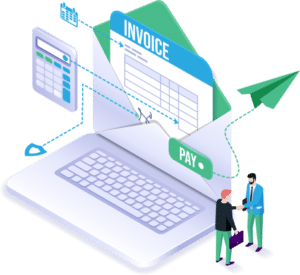Our Journey to Integrate Data into Law Starts – With the Single Source of Truth
The Rise of the Cloud – Our Journey to Integrate Data into Law Starts – With the Single Source of Truth
A few weeks ago I had the honor of joining Ryan Buoscio, Senior Legal Program Manager & Insurance LiDgaDon AnalyDcs Lead at Uber and Eric Hurwitz, Partner at Stradley Ronon and Co-Chair, Financial Services Litigation on a Corporate Counsel Business Journal webinar, “Industry Experts Reveal Their Secret Case Management Best PracDces.” Ryan and Eric shared some great stories about how their respective organizations leverage Advologix and our SalesForce base to drive efficiencies that even just a few years ago no one would have ever thought possible. We will be releasing a whitepaper soon on this topic and some case studies as well.
In the meantime, I wanted to talk about a more general theme, of the information management journey that I have seen law firms and legal departments make during my fifteen-year tenure as head of Advologix. During that time I’ve seen legal technology evolve in three phases from the “Sneakernets” of the 1990s and even early 2000s to that new hot concept, legal analytics:
- Implementing the single source of truth
- Developing processes
- Empowering analysis and prediction
But I don’t think legal tech needs to or even should stop there; I see us going farther, to the point where we can start to build out the fourth phase, with the kinds of virtual models that drive progress in so many other areas:
4. Leveraging virtual models
I’ll go through each phase in a separate blog post so that we can give each one the careful attention it deserves.
Phase 1: The Single Source of Truth
Back in the days of the mainframe, we had large, centralized systems that provided a really high degree of control, security, monitoring, management. Unfortunately, they didn’t allow end-users and business departments to get the applications they need or evolve as rapidly as the business.
So, we saw the rise of distributed computing networks, the personal workstation client, server computing, and eventually web apps. And now we have cloud computing, and in these large cloud platforms bringing the best of both worlds together they provide a high degree of flexibility. And the ability to deliver.
What business units need is something that can provide the high level of security, control, etc. required from a security compliance and conformance perspective? With the Cloud and pre-integrated solutions, we see now that organizations are quickly moving from their current state to the desired state where they have a single system of record. This allows organizations to have their data centralized and put it into context to create a single source of truth. As we’ll see in my blog post covering the next phase, with that single source of truth organizations will then be able to now implement more effective process workflow data analytics.
Surprise! Law Firms Often Have the Advantage Here
One final note before we move on to the next Phase and start talking about the process: as surprising as it might seem to many, law firms often have the advantage here over corporate legal departments when it comes to creating that critical Cloud-based single source of truth. Legal tech has been around a long Dme, many, many years. There are many, many products available, a huge amount of choice, and law firms have had ready access to this technology.
There’s also a lot of legacy systems in law firms, with a lot of point products, and the need for modernization of those. Now the Cloud brings net new capabilities and the ability to use these things cohesively. Law firms have thus found themselves in a position where they have been able to migrate to the Cloud with these specific needs and capabilities relatively quickly.
I would contrast that with in-house counsel. Legal departments are pretty much dictated to use specific systems that are generally available for the entire company, and those typically are not really legal process friendly. And so, we run into a lot of in-house counsel organizations that are stuck on using old-school file share systems, isolated individual calendars, and such. Yet, if we look at Uber, it was founded in 2009, so their legacy systems simply cannot be that old. Whereas, we also work with a company that was founded in 1926. That’s a drastic difference in the type of technology. For those companies with that kind of history – that kind of legacy – the rise of the Cloud has really opened up a new possibility.
The Rise of the Cloud




